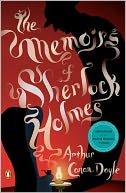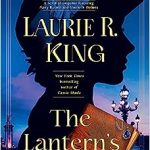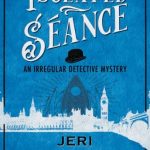 In anticipation of the new Sherlock Holmes movie (Sherlock Holmes: A Game of Shadows) being released on December 16, 2011, The Memoirs of Sherlock Holmes has been reprinted with a new cover that bears the stamp “Inspiration for the Major Motion Picture.”
In anticipation of the new Sherlock Holmes movie (Sherlock Holmes: A Game of Shadows) being released on December 16, 2011, The Memoirs of Sherlock Holmes has been reprinted with a new cover that bears the stamp “Inspiration for the Major Motion Picture.”
I decided it would be a good excuse to re-read some of the Holmes Canon. I’ve read them all, some more than once, but not for quite a while. I looked over the new printing to see that it contained the same stories that have usually been included in the Memoirs, and then, I chose a different approach this time.
We have a copy of The New Annotated Sherlock Holmes, and, well, I’ve never indulged. So for this foray, I read the Annotated version.
First, I’d forgotten what a treat it is to read the original stories. The Memoirs of Sherlock Holmes contains a dozen short stories. They were all written at the height of Conan Doyle’s, or perhaps I should say Dr. Watson’s, literary powers. Each is a gem.
One story in this collection, The Greek Interpreter, is notable for being the first appearance of Sherlock Holmes’ brother, Mycroft — that mysterious accountant somewhere in Whitehall who occasionally was the British Government. The entire government. Mycroft’s tentacles still linger. It is speculated that the mysterious “M” who runs the agency that James Bond works for is a direct bureaucratic descendant, hence the name, “M”.
But it’s the last story in the book that caused it to be republished for the movie. The last story in Memoirs is the most famous, The Final Problem. In that story, Holmes meets his nemesis Moriarty at Reichenbach Falls. At the end of the story, both Holmes and Moriarty are presumed dead.
When the story of Holmes’ death reached the public in 1893, very real people wore mourning for this supposedly fictional character. Subscription cancellations to the Strand Magazine, which published the Holmes stories, were reported to have reached 20,000. The campaign to resurrect Sherlock Holmes may have been the first successful fan campaign in entertainment history because, as we all know, Sherlock Holmes eventually returned from Reichenbach. Conan Doyle published The Hound of the Baskervilles (set before Holmes’ supposed death) in 1901, and the first stories from The Return of Sherlock Holmes in 1903.
Escape rating A: The stories are just as good as I remember. It was a joy to read them again. Reading the annotations was interesting and strange. The ones that define terms we no longer use are fascinating. The minutiae of horse-drawn carriages, for example, or the difference between what we think of as a bus and what the Victorian era called an ‘omnibus’. The various printing histories of particular stories is less interesting. On the other hand, the illustrations are fabulous, since the Annotated version includes the original Paget drawings, the Harper’s Weekly drawings from the US, plus illustrations from advertisements of the time to explain things like what was an ‘antimacassar’ anyway?
If you think you remember these stories–indulge yourself–read them again. If you’ve never had the pleasure, then you are in for a treat. Holmes is timeless.








